Introduction
In this recitation, I created a circuit in which the potentiometer controlled the movement of the stepper motor based on its input value. I then combined my circuit with my partner, who created the same circuit, and we created a drawing machine using the mechanical parts provided.
Step 1
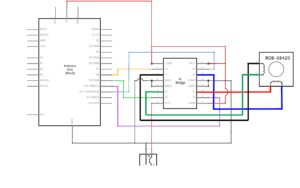
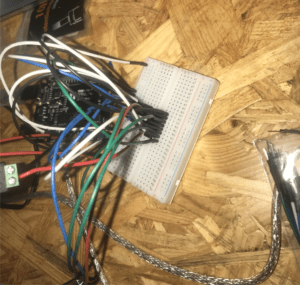
For the first step of constructing the drawing machine, I individually constructed a circuit in which a stepper motor can make one full revolution. This first step was not too difficult as it simply involved following the diagram and the example code. Once the circuit and coding were completed, the stepper motor made a singular smooth rotation every time the code was uploaded to the Arduino.
Step 2
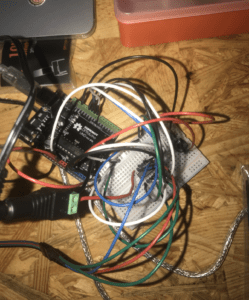
For the second step of constructing the drawing machine, I individually added a potentiometer that takes its analog input and outputs it to the stepper motor in order to coincide their position with each other. The addition of this component was very easy based on the diagram, but when it came to the coding, I realized it was very important to allow the values of the potentiometer to match up with the range of the stepper motor. The number of steps on the motor had to be defined as 200, and then the map function had to be used to convert the range of the potentiometer to the varying range of the stepper motor. After having done this, the stepper motor was able to accurately respond to the manipulation of the potentiometer.
Step 3
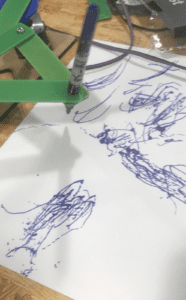
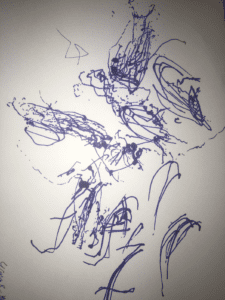
The final step was the most interesting for me because it was the first time we had utilized 3d printed parts in conjunction with the Arduino and breadboard in order to construct an entire functioning device. I convened with my partner, and we were able to use the parts provided and construct the drawing machine based on the diagram given. At first, the drawing machine had issues running smoothly and it would shake and lag behind. However, once tightening the pins, the drawing machine ran much more smoothly. The drawing we created with our machine wasn’t too appealing, but it is what we were able to produce. This was entirely rewarding because the utilization of mechanical parts and electrical circuits allows for a deeper exploration of the Arduino’s possibilities.
Question 1
I would be extremely interested in machines that can use light in order to create designs and different images. I want to create visual art displays that can entice the viewer by allowing them to draw input on a touchscreen sensor. I then want to take this input and have a wall of LED’s that move and light up according to the design that you create on the touchscreen. This would require a series of motors and gears, but it would be very complex and interesting contraption that would allow the interactor to perceive their own art in a more unique form.
Actuators are components of different machines whose usage allows the functioning of the system. Actuators are necessary components for an interactive system as they allow for a person to input their own energy into the machine and trigger its necessary function.
I believe the digital manipulation of art is a necessary and important feature of contemporary art. With the rising convention of the usage of technology, more and more artists are using digital manipulation to display their ideas rather than more conventional art forms such as painting and drawing. They allow artists to find a more fast track method to express their individual creativity
The creative process is the process in which an artist is so compelled by their ideas that they feel the need to express their perspective to the outside world in any way possible. The creative process is one in which the artist extends their beliefs onto an external medium in order that it can be enjoyed by them and even other people.
Question 2
The art installation that most stood out to me when reading ART + Science NOW is Flying Carpet, 2004, by David Moises. It uses an everyday leaf blower in order to create a hovercraft. This compares to the work done during my recitation because we took everyday objects such as pencil, paper, pins, and combined it with more technologically advanced mechanics such as the Arduino, stepper motors, and 3d printed bases in order to create a system made of everyday tools to accomplish something quite fascinating. In the same method, I believe David Moises uses a leaf blower as an actuator to power his hovercraft in order to express the same idea, that even mundane objects such as leaf blowers can be apart of extraordinary systems when infused with revolutionary creative processes.